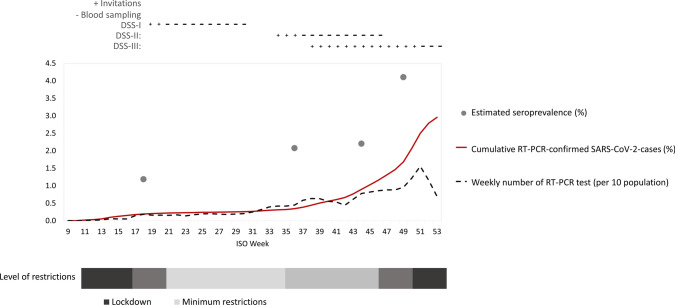Fig. 1.
Seroprevalence point estimates per survey period (%, grey dots), cumulative RT-PCR-confirmed SARS-CoV-2 cases (%, solid line), weekly number of SARS-CoV-2 RT-PCR tests (per 10 population, dashed line), week of invitation for each survey (+ signs above the panel) and blood sampling (- signs above the panel) by ISO week, Denmark 2020. In addition, the timeline under the figure in schematic form illustrates the strength of the national measures that were in place to reduce transmission in 2020. In short, they comprised a full lockdown (shown using dark shading) involving a close-down of normal societal activity, but without imposing a curfew in March 2020 (week 11). The lockdown was gradually lifted from late April (week 16) into May. Over the summer, only comparatively mild restrictions were in place (regulating travel, gatherings, nightlife and more, shown using light shades). Starting September (week 34) restrictions were reintroduced and with an increasing incidence of infections occurring towards the end of the year. Harder restrictions were introduced in November (week 46) followed by a full lockdown being imposed in December (from week 50)

